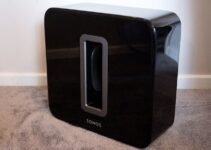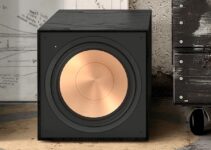Having your Polk subwoofer not working is usually a simple issue that can be fixed with a few tweaks. However, in some cases, it could be an indication of a more complex problem.
This guide covers all the possible causes of a faulty Polk Subwoofer that is not working and the right fixes to apply.
Polk Subwoofer Not Working: Likely Causes

1. Faulty Connections
Faulty connections are usually the most common issues. A loose or faulty connection can cause the subwoofer to stop functioning properly. In this case, you only need to get the subwoofer connected properly.
2. Power Issues
Obviously, the subwoofer would need to be connected to a power source to function properly. If you’ve not connected properly or you have a faulty power strip, the subwoofer will not work.
3. Blown Fuse
The fuse is a safety feature designed to protect the subwoofer from electrical damage. A blown fuse will prevent the subwoofer from functioning correctly.
However, this also means there was an electrical surge that would have damaged the subwoofer’s components. A blown fuse is not a common issue, but it is worth checking out, especially if you’ve checked the connections and power source and found no problems.
4. Driver Issues
The driver is the main component of the subwoofer that produces sound. If the driver is damaged or not functioning properly, it will affect the sound quality of the subwoofer or prevent it from working entirely. Once again, this is not a common issue but is also worth giving a look at.
5. Settings Issues
Another reason why your Polk subwoofer may not be working could be due to settings issues. You might have not correctly configured the settings on your receiver or amplifier for the subwoofer.
6. Amplifier Issues
The amplifier boosts the audio signal and sends it to the subwoofer. A faulty amplifier will not work correctly, which means the subwoofer may not receive a proper signal, or the signal may be too weak.
Polk Subwoofer Not Working: DIY Fixes
There are several ways to fix your Polk Subwoofer and get it working again. While these fixes are easy to apply, you might require some technical knowledge to apply them accordingly.
If you do not any or you’re uncomfortable with any of these steps, it may be best to contact a professional audio technician or the manufacturer to help out.
1. Fixing Faulty Connections
You can start by checking the connections using the steps below
- Turn off your receiver or amplifier and unplug it from the power source.
- Disconnect the speaker wires from both the receiver and the subwoofer.
- Inspect the speaker wires for any damage or corrosion.
- If the wires are damaged, replace them with new ones. This might be tricky, especially if have no knowledge of how connect wires. If you find this uncomfortable, then you might want to consider and get a professional.
- Reconnect the wires to both the receiver and the subwoofer, ensuring that they are firmly plugged in.
- Test the subwoofer to see if it is now functioning correctly.
2. Fixing Power Issues
For power issues, you can apply the steps below
- Check the power cord and make sure it is securely plugged into the subwoofer and the power outlet.
- If you are using a power strip, make sure it is turned on and that the subwoofer is plugged into it.
- Check the power outlet by plugging in another electronic device to see if it is working.
- If the power outlet is not working, try plugging the subwoofer into a different outlet.
- If none of the above steps work, try using a different power cord.
3. Fixing a Blown Fuse
If the above instructions fail to fix the problem, you might want o consider that you’re dealing with a blown fuse, follow these steps to fix the issue:
- Ensure that the receiver is turned off and unplugged from the power source.
- Open the fuse compartment on the back of the subwoofer.
- Remove the blown fuse and replace it with a new one of the same rating.
- Close the fuse compartment and plug the subwoofer back in.
- Turn on your receiver and check if the subwoofer works.
4. Fixing Driver Issues
You should also consider the driver if you’re still looking for a fix. The steps below should guide you on how to go about this.
- With the receiver turned off, remove the driver from the subwoofer and inspect it for any visible signs of damage, such as tears or holes in the cone.
- If the driver is damaged, you will need to replace it with a new one.
- If the driver appears to be in good condition, reconnect it to the subwoofer and plug it back in.
- Check if the subwoofer works
5. Fixing Settings Issues
To ensure that your settings are correct, follow these steps:
- Check the settings on your receiver or amplifier to ensure that they are correctly configured for the subwoofer.
- You can also check your user manual for your receiver to get the correct settings.
- If the settings are incorrect, adjust them accordingly.
- Test the subwoofer to see if the problem has been fixed.
6. Fixing Amplifier Issues
You can fix amplifier issues by following the steps below
- Ensure that the amplifier is turned off and unplug it from the power source.
- Inspect the amplifier to see if there are any visible signs of damage, such as a burnt smell, blown capacitors, or other obvious damage.
- If there is visible damage, you will need to repair or replace the amplifier.
- If there is no visible damage, you can check the amplifier settings to confirm that they are correctly configured for the subwoofer.
- Check the user manual for your amplifier to ensure that the settings are correct.
- If the settings are incorrect, you should make the right adjustments to get them in order.
- Test the subwoofer to see if the problem is fixed.

![Samsung Subwoofer Won’t Connect to Soundbar [FIXED] Samsung Subwoofer Won’t Connect to Soundbar [FIXED]](https://audiojust.com/wp-content/uploads/2023/05/samsung-subwoofer-wont-connect-to-soundbar-211x150.jpg)




![Samsung Subwoofer’s Blue Light On But No Sound [FIXED] Samsung Subwoofer’s Blue Light On But No Sound [FIXED]](https://audiojust.com/wp-content/uploads/2022/12/samsung-subwoofer-blue-light-on-but-no-sound-211x150.jpg)

![LG Subwoofer Not Connecting to Soundbar [Solved] LG Subwoofer Not Connecting to Soundbar [Solved]](https://audiojust.com/wp-content/uploads/2022/12/lg-subwoofer-not-connecting-to-soundbar-211x150.jpg)
